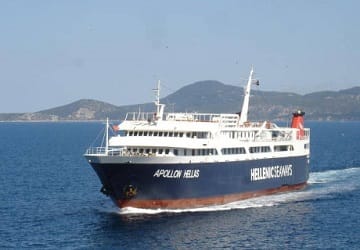
-
Recent Searches
Recent Searches
- Travel Alerts
- My Account
- Customer Service
-
United Kingdom
Kavala to Syros Ferry
The Kavala Syros ferry route connects Greece with Cyclades Islands. Currently there is just the 1 ferry company operating this ferry service, Hellenic Seaways. The crossing operates up to 2 times each week with sailing durations from around 21 hours 45 minutes.
Kavala Syros sailing durations and frequency may vary from season to season so we’d advise doing a live check to get the most up to date information.
Average Kavala Syros Prices
Prices shown represent the average one way price paid by our customers. The most common booking on the Kavala Syros route is a car and 1 passenger.
Kavala Guide
Located in the east of Macedonia, in northern Greece, is the city and port of Kavala. The city lies on the Bay of Kavala and is just across from the Greek island of Thasos, and is roughly 160 km from Thessaloniki, 37 km from Drama and 56 km from Xanthi. The city has a rich history and there are many things to see and do whilst there. Dominating the top of the peninsular, where the old city stood, is the Castle of Kavala. Repeated reconstruction work and repairs to the castle's fortifications by the Byzantines, Venetians and Turks has left traces on its walls. In its current form, the castle was built in the first part of the 15th century on a foundation dating back to the Byzantine period. Other sites of interest include Kamares (the old aqueduct) which was constructed in the Roman/Byzantine period, the Imaret and the House of Mehmet Ali in the Old Town square.
From the city's port ferries operate to Agios Efstratios, Limnos, Lavrio, Kirikos, Chios, Karlovassi, Psara, Vathi and Mytilene.
Syros Guide
The Greek island of Syros is one of the Cyclades group of islands and is unusual in that the island's architecture is more medieval rather than the more typical Cycladic. The island's capital is Ermoupolis and has some fine examples of Venetian mansions to see. In the Vaporia quarter of the capital visitors will find some lovely large churches and impressive neoclassical buildings, such as the Town Hall and Apollo Theatre in the central square. Also popular with visitors are the island's beaches which are well equipped for tourists and have a good range of facilities.
The island can trace its history back to the 3rd millennium BC where signs of inhabitation have been found in the Halandriani and Kastri parts of the island. Artefacts found indicate that there was some kind of metal workshop on the island which possibly had a trading relationship with Asia Minor. The Samians occupied the island in the 6th century BC and is when many of the island's inhabitants moved to the island. At that time, the important physician and philosopher Pherecydis was born in Syros and some years later he went to Samos and became the teacher of Pythagoras.


